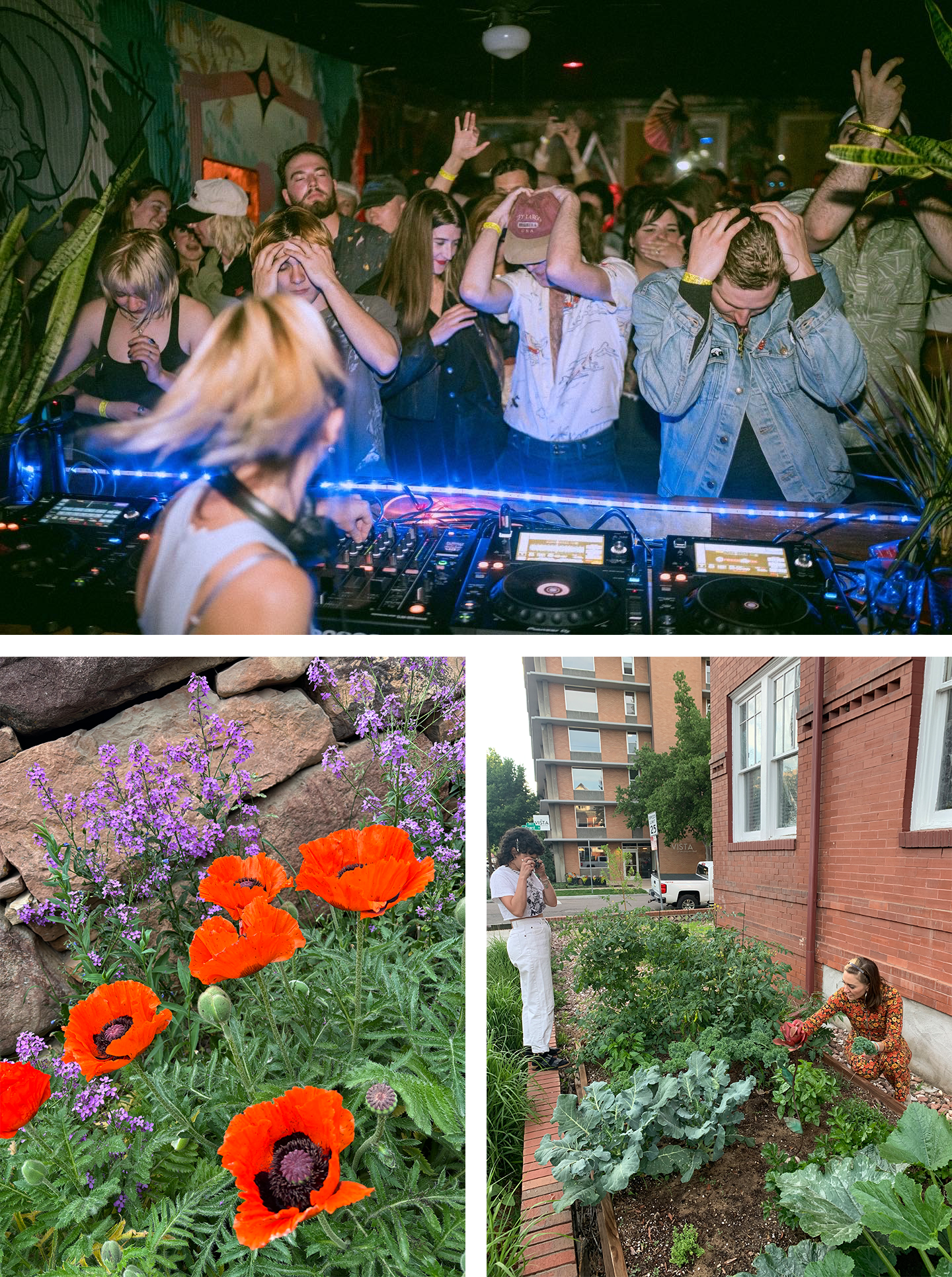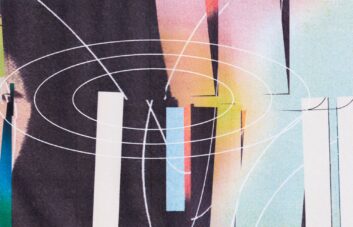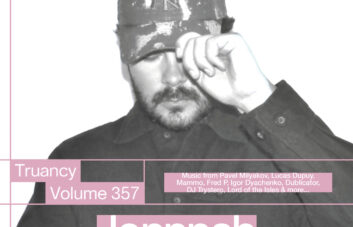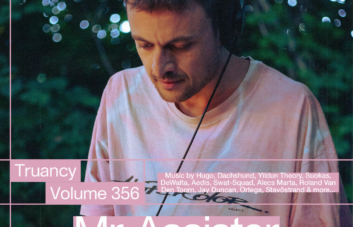Bratches | Soundcloud | Instagram | Resident Advisor
Coming up as a raver in the Denver electronic music community, whilst also formally raised as a dancer prior to that, electronic music and DJing offered Taylor a way for her to keep moving and slowly discover her own language of movement. Starting out as DJ after a move to Los Angeles, it was another move to New York where the regular gigs started to land, making rounds in the club circuit at places such as Public Records, Good Room, The Bunker and Bossa Nova Civic Club. Now based in Denver again, she’s since toured across the US, taking her love for bass music and fusing a mixture of dubstep, acid, electro, DnB, and jungle with an aim of moving people both physically and spiritually. Having used dance as a profound healing tool for most of her life, her talks on ‘Rave as Ritual’ are an informative insight on the way a night of dancing can be a deeply therapeutic experience. Recently dropping ‘Taylor’ from her DJ name to help seperate her work in the healing arts, Bratches is a new reinvention of herself as a DJ and producer as she looks to the future.
Hey Taylor! Could you describe the process of creating this mix? Was there a specific message or feeling you wanted to convey? “I didn’t set out to showcase any particular feeling or genre – I recorded this mix in one take improvisationally; it just flowed. I think this mix showcases my current sound and range – perhaps it leans a bit more towards peak time energy: dance-oriented, deep, and ecstatic all at once. In general I have always aimed to find the balance between experimental and very danceable. Also, living in Colorado has influenced me lately and I wanted to represent where I live a bit — Denver is known for heavy dubstep and American bass music. I used to snub my nose at it, and now find certain threads of CO-style wook culture finding its way into my own sound. But this mix pulls from a lot of influences I’ve been weaving over time: from Bristol-style bass to my roots in techno and electro, to IDM and more. In general with my sets and mixes, I like to build some kind of arc while throwing in left turns, taking the listener through different soundscapes and moods.”
Where did you grow up? How did that shape your sound or the way you relate with music? “I grew up in NY and CT. I spent my childhood 30 mins outside of NYC and it deeply influenced me musically. 90’s hip hop was everywhere; I remember when school got cancelled on the day Biggie died. I related to music socially from a very young age – from school dances, to roller skate parties, to literally sitting on the curb in the summer listening to Lil Kim and DMX with a boom box and a bunch of friends. My family owned a dance school too, so I was always dancing and always listening to music. Then we moved to CT when I was 13, which was completely different racially and socioeconomically, and I started getting into punk. I became completely obsessed with hardcore, emo, screamo, indie — New England had a huge scene for this. I have always been drawn to intense music that could be moved to in social settings. So when I found rave culture it contained the energy of the music I grew up with (techno reminded me of punk / electro reminded me of hip hop). And dubstep / jungle / DnB feels this way to me too… reminding me a bit of these feelings in my youth.”
 Photo 1: Bratches. Photo 2: Cherry blossom at Eldorado Springs. Photo 3: With my best friends at my favorite party on planet earth– a secret psychedelic party in the mountains.
Photo 1: Bratches. Photo 2: Cherry blossom at Eldorado Springs. Photo 3: With my best friends at my favorite party on planet earth– a secret psychedelic party in the mountains.
Can you tell us about three albums that a) define you getting into electronic music in general, b) maybe a midway album when you were fully invested in DJing and and c) a recent album that you’ve especially enjoyed? And what made these albums so special at the time.
a) Autechre – Amber. There were certain in-roads to electronic music before this, but when I think about an album that really sealed the deal for me, helping me understand the power, complexity and intricacy of what electronic music could be — this one was it.
b) Skee Mask – Compro. Might be my favorite electronic album of all time. After Djing for a couple of years, this album represented a breakthrough for me in terms of upending certain genre conventions and expectations. I had been very into deep techno before this, and had an existential crisis about wanting to be a cross-genre DJ and expand/evolve but didn’t know how. This album gave me permission to be me, and completely freed me from the box I had found myself in. As did a lot of Ilian Tape releases at that time.
c) This is so hard. It’s a couple years old now and I’ve played these tracks to exhaustion, but Visages’ Hagakure EP came around when I was really beginning to play a lot more dubstep and DnB. I rinsed these tracks because they were very helpful DJ tools — one track begins as 140 then switches into DnB after the breakdown, and another track is reversed – begins as DnB and switches to 140. As a cross-genre DJ who often would mix from dubstep into DnB or jungle, these tracks were not only helpful, but inspired my own ideas around production. I’ve always loved tracks that defy genre or exist in a liminal space, but to think about actually creating my own that could subvert expectation by changing concretely from genre to genre within a single track was kind of mind-blowing (and influenced one of my own tracks I’ve included in the mix!)
You recently dropped the ‘Taylor’ from your DJ name for it to become just ‘Bratches after a long period of using your full name’. Can you tell us the thought process behind the change? “Thanks for asking :) This was a tough decision. I wanted and needed a refresh for some time – new energy. I started to produce more music, too, and having a new alias for potential releases feels right as I expand beyond being just a DJ. I now run a business in the healing arts under my full name too, and as I began to share my other work on spirituality/healing/ psychedelics on social media etc, it felt weird, forced and incongruent with my identity as “Taylor Bratches the DJ.” This inner conflict around presentation of identity began to take up a lot of space in my brain and heart. I wanted so badly to live in a world where I could easily and gracefully share all of myself under my true, full name, but the reality is social media and capitalism have forced our identities into specialized “brands.” When I first started using my full real name to DJ, I was very optimistic that I could present a full picture of who I was, but in reality that’s a very vulnerable thing and I couldn’t get quite fully comfortable with that level of vulnerability (i.e. sharing my most woo woo self with my music friends, and likewise sharing my rave life with my clients). It started to feel easier to give into the separation of my DJ life and my work in the healing arts: a clear focus on one aspect of self, and a clear focus on another aspect — which I felt needed to be separated by two names, two “brands”, two representations expressed inwardly and outwardly. I feel now that I can lean more into full expression of each version of myself and my work.”
2023 seemed to have many highlights for you but one of them was taking the leap to start your own business/private practice as a healer/energy worker/psychedelic guide. Can you tell us a little bit about that? “I’ve been a psychonaut my whole adult life and an energy worker for 8 years. As someone with a pretty complex trauma history, much of my adult life has oriented around healing — my own and my family’s. I’m the child of an addict – my father passed from alcohol and meth addiction – and I was not okay for a long time. I went through a long process of personal healing paired with a lot of spiritual seeking, which was incredibly multi-faceted — aided by psychedelics and alternative healing modalities. Once I began to really heal and embrace more of who I was, I began apprenticing with some psychedelic facilitators and learned how to guide, while also doing energy work – all on the side while working “real” jobs. When I moved back to CO a couple of years ago, psychedelics were legalized, and I decided to go through a psychedelic facilitator training program so I could actually begin doing this work more legitimately. My energy work also flourished and I began developing my own modality. Energy work is a skill that requires a lot of concentration and sensitivity to unseen realms of spirit and body, which psychedelics also helped me tap into over time. I’m very interested in the combo of energy healing with psychedelics — it’s a very potent combination that yields incredible results for people. If you can perceive and consciously work with energy, you can heal in ways that traditional models don’t quite give access to. My skills and working with others all grew organically over years until I decided to quit my job to pursue this work full time (I always struggled to find jobs that I really enjoyed). Ultimately I became more aware that I wanted (needed) to work for myself, and live a life aligned in purpose beyond DJing. And my music/dance life informs my healing practice, and vice versa. For me, this process of making a living doing work that I always doubted I could do “legitimately” has been healing in and of itself — I feel more empowered and connected to my center.”
I recently caught a clip of a study showing that dancing is one of the best forms of treatment for depression. Was also interesting to see you have been doing talks on ‘Rave as Ritual’ and how dancing can be more than just an act of movement. What have been your main findings on this? “Dance has been central to my life since I was a child, and dance has been one of the most profound healing tools for me, personally. I was offered an opportunity to give a talk at the MAPS Psychedelic Science Convention in 2023 in Denver called “Rave as Ritual: The Intersection of Collective Movement and Entheogens.” It was the first time I had really cohesively tried to put to words, in a presentation format, all of the ways in which I have found rave culture to be healing — namely, dancing on psychedelics in a social setting. Everything has its shadow side, but so much healing can come from exploring the shadowy parts, and for the most part, the power of dance/movement and perceiving raving as a necessary modern ritual has a huge effect on one’s own process of development and even healing. There was a Kent study called “I Get High with a Little Help from My Friends” that deduced that the “4 D’s” – Dance, Drums, Deprivation and Drugs — when used together in a ritual context (aka, a rave) yielded incredibly impactful results for personal growth, mood, depression, etc. Interestingly, the study also suggested that without the ritual context (the rave) these 4 D’s did not yield the same results. The psychedelic space emphasizes one-on-one therapeutic experience, but that’s not the only way to heal; often healing is deeply relational. I don’t think a lot of us need a study to prove the power of dance — and reclaiming oneself through a process of embodiment, especially in a safe community space — to verify transformative or transcendent experiences we’ve had on the dance floor. Primal dance rituals are embedded in humanity’s development.”
 Photo 4: Sorted crew (plus Hodge). Photo 5: Decompressing at hot springs after a party I played in New Mexico. Photo 6: More mountain views
Photo 4: Sorted crew (plus Hodge). Photo 5: Decompressing at hot springs after a party I played in New Mexico. Photo 6: More mountain views
What was the last thing to put a big smile on your face and when was the last time you had a proper dance? “I just had a proper dance last weekend at Nowadays in NY — I was there for a Nonstop with Skee Mask and DJ Voices (Skee Mask’s NY debut, and Voices’ final set at Nowadays). I fell into a total hypnotic groove / flow state that just lasted for hours on end. When I get into that state, the music moves me — I’m not moving my body consciously; I surrender to my body’s language of movement and thought just fades away. What made me smile was seeing all my NY friends rhythmically swaying all around me — and it was a reminder that, despite division or tension or conflict — the potential for unity consciousness still exists on the dance floor. There was a lot being expressed and communicated through sound that day, and there was both a deep appreciation for the individual expression coming through each DJ, while also a sense of collective flow. Those are the moments I really live for on the dance floor: when I feel a sense of clarity and oneness within my own body, and I can sense that’s happening collectively — at least on a small level — too.”
 Photo 7: Me playing at Photo 7: Now defunct ‘Have a Good One’ party. Photo 8: Flowers. Photo 9: Garden friends
Photo 7: Me playing at Photo 7: Now defunct ‘Have a Good One’ party. Photo 8: Flowers. Photo 9: Garden friends
You can download Truancy Sessions S01 E07: Bratches in 320 kbps and view the full tracklist on Patreon here. Your support helps cover all our costs and allows Truants to continue running as a non-profit and ad-free platform. Members will receive exclusive access to mixes, tracklists, and discounts off future merchandise. If money is tight however and you’re desperately after any ID, please leave us a comment over on the Soundcloud link and either us or Bratches will get back to you :)
Artwork by Kushagra




